
Bienvenido, usted está en MARCA PAÍS
Imagen

Imagen
Get ready to tour the Eastern Andean Region, starting from Tolima, to Bogotá, Cundinamaca, Boyacá, Santander and North Santander, you will see what Colombia has to offer.
The Eastern Andean Region is one of the most beautiful parts of Colombia. It not only has a diversity of weathers, it also has a varied of exotic birds and landscapes. It goes from the department of Tolima, through the planes of Bogotá and Cundinamarca, up to the cold weather of Boyacá and ending with the warmth of Santander and North Santander.
In this guide we will take you through the most amazing places the Eastern Andean Region has to offer. Let’s start with where you must definitely go.
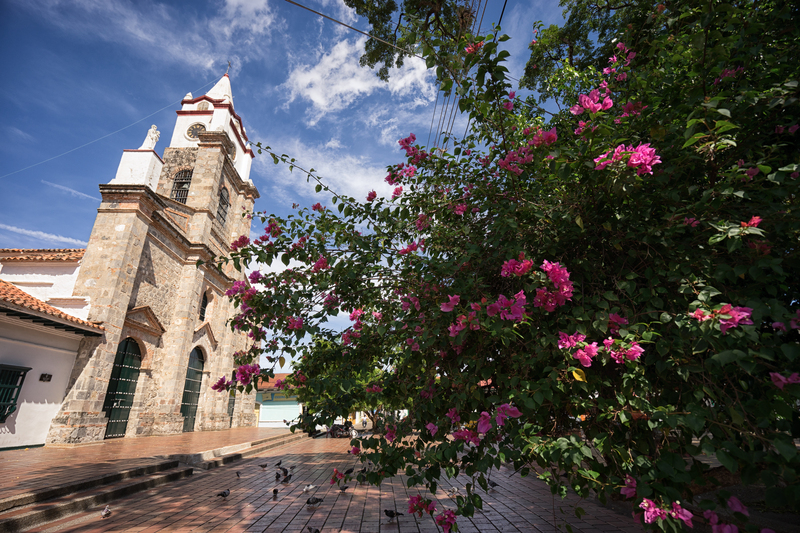
The colonial town in Honda is listed as one of the heritage places of the country.
We’ll start with the department of Tolima, here, music is the distinctive cultural expression of Tolima. Its capital, Ibagué, is known as the Musical Capital of Colombia, in the department there are many musical festivals and contest that you’ll be able to experience through the year.
In this department you cannot miss going to the Canyon of Combeima, where you can go trekking through a path that takes you through the mountains in a beautiful scenery. You also have to go through the Natural Reserve of Orchids where you can see the hundreds of variations Colombia has of these beautiful plants.
On your way you cannot miss going to the capital of the department, Ibague and see the Prime Cathedral which is not only beautiful but imposing, invites you to reflect, very pleasant to walk close to it, because one of its roads is pedestrian.

Bogotá, the city “2,400 mts closer to the stars”.
On your way up this region you will find the country’s extensive capital, Bogotá, which is located high in The Andes, giving the city its logo of “2,400 mts closer to the stars”. The city is full of amazing places to discover between cultural museums, which includes the Gold Museum full of the pieces the ancestors made to the best gastronomical restaurants.
Here you’ll have to stop at La Candelaria, the cultural center of the city that has the colonial streets and buildings from 500 years ago as well as the Colon Theater with a Neoclassic style and the Botero Museum, full of the works of this super artist. You will also be able to go up to Monserrate, where you can see the full city from above and have a snack in the cold mountain.
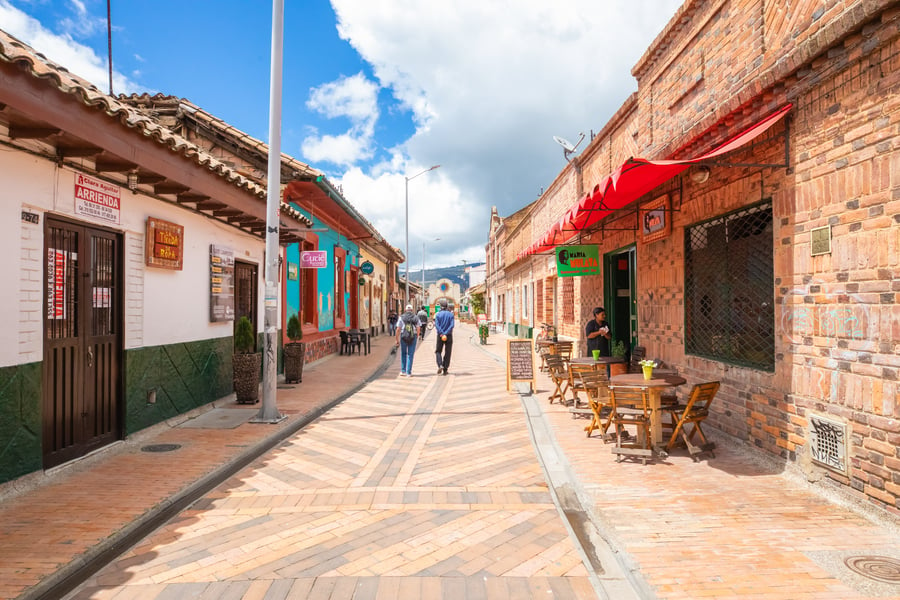
The pedestrian area in Chía is well-known for its craftshops, restaurants, cafés and bars.
Continuing the route up the region you will find various small towns in the department of Cundinamarca that offer a natural view of the country and you’ll also find the magnificent Salt Cathedral in Zipaquirá. The Salt Cathedral is one of the most important engineering works in Colombia and at the same time, one of the main tourist attractions in the department of Cundinamarca.
Its an important historical, cultural and religious heritage of the nation underground architectural work whose depth of 160 meters underground, where the chapels of are carved into the walls of the mine, with simple and powerful lines bathed in a soft light that accentuates the atmosphere of seclusion.
Another unmissable place is the Guatavita Lagoon, where the legend of El Dorado is from. It comes from the Muisca casique that used to enter the lagoon bathed in gold and with thousands of golden pieces to give in sacrifice to the gods. Even though there have been tenths of searches, the gold has not been recovered, giving the lagoon a mystical feeling.
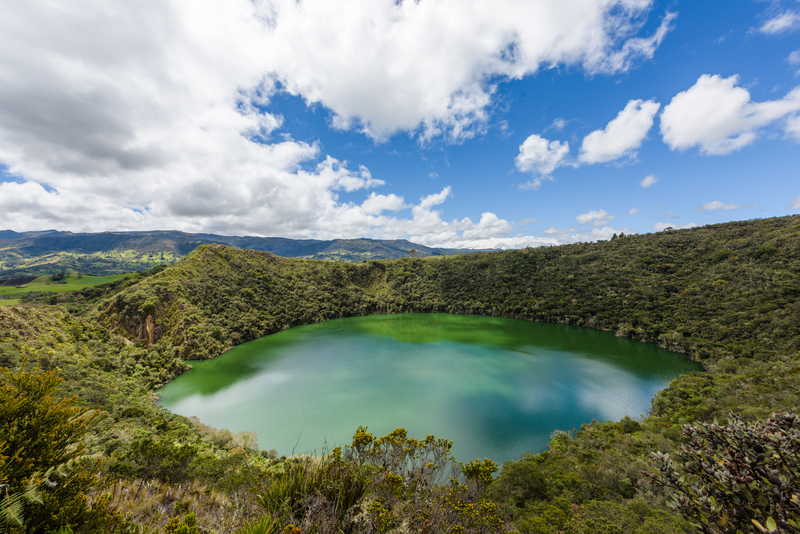
The pedestrian area in Chía is well-known for its craftshops, restaurants, cafés and bars.
In Boyacá you will find some of the most beautiful architecture the country has to offer with their colonial housing painted in various colors full of artisanal pieces that are a big part of Colombia’s brand. The town of Villa de Leyva is the most renown town in these parts and is the best place to get the feeling of everything these towns have to offer with many trekking routes and various cultural places.
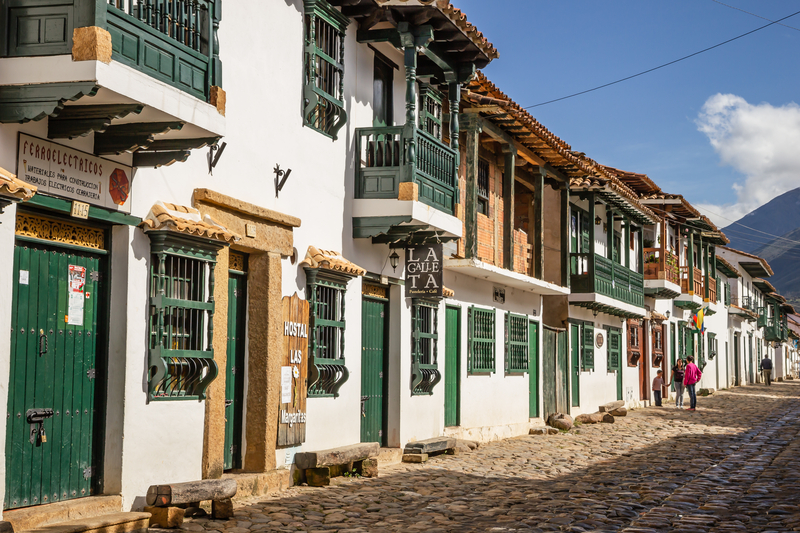
In Villa de Leyva you will find some of the most beautiful and traditional architecture in Colombia.
Here you can also find many natural parks that are a must see in your travels such as the Iguaque sanctuary, where you can travel through the Paramo and see the vegetation change from step to step and see the beautiful frailejons around the lake at the top that gives a beautiful view. You will also find a great variety of exotic birds only found in Colombia that live in their natural habitat without interference.
Almost at the end of the route you will find Santander. It is characterized by river valleys and rugged terrain, including the rugged mountains of the Chicamocha National Park. The park is known for its cable car that crosses the Chicamocha river canyon, in addition to its water park.
You will also find the high-rise city of Barichara which is famous for its cobblestone streets and colonial architecture. You will also find the city of San Gil, where most people go to find many ecotourism plans and aventure sports that will give even the most daring a huge dose of adrenaline.
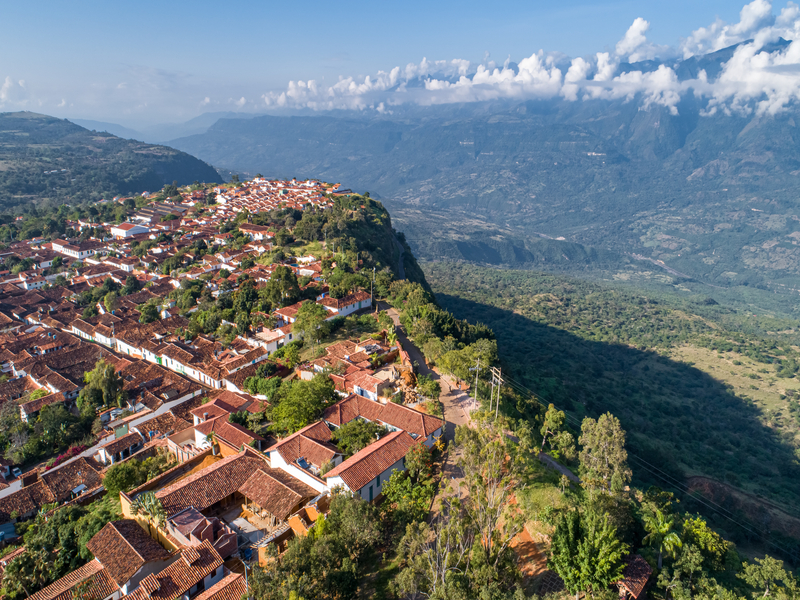
Barichara is a small town characterized by its colonial architecture.
At the end of the route you’ll come to North Santander, characterized by a mountainous relief, although two large physiographic units can be distinguished, one mountainous and one flat.
The mountainous one corresponds to the Eastern Andes, from which two large branches emerge, one that continues north to form the Motilones mountain range and the other towards the northeast, which goes into the Republic of Venezuela.
This region is also inhabited by numerous indigenous groups such as the Cúcutas in the Cúcuta area, the Chitareros in Pamplona and the mosquitoes in Ocaña, among others.
Along the natural places suitable for rest and ecotourism are the Tamá Natural National Park, the Cazadero and Brava lagoons, the Valderrama and El Páramo caves, the unique Los Estoraques natural area and the Pailitas and La Chacona streams. The department of North Santander offers countless tourist attractions from a natural, cultural and scientific point of view.
As a bonus, through all the route you may be able to see The Condor of the Andes, which is the emblematic bird of the shield of Colombia. It is the largest flying bird in the world. It is a scavenger bird, that is, it feeds on dead and decomposing animals. Due to its function as a scavenger, it is an important piece in the balance of the ecosystems of which it is a part and is very useful for the health of many animals, because by quickly consuming the corpses it eliminates sources of contact of diseases or sources of contamination.
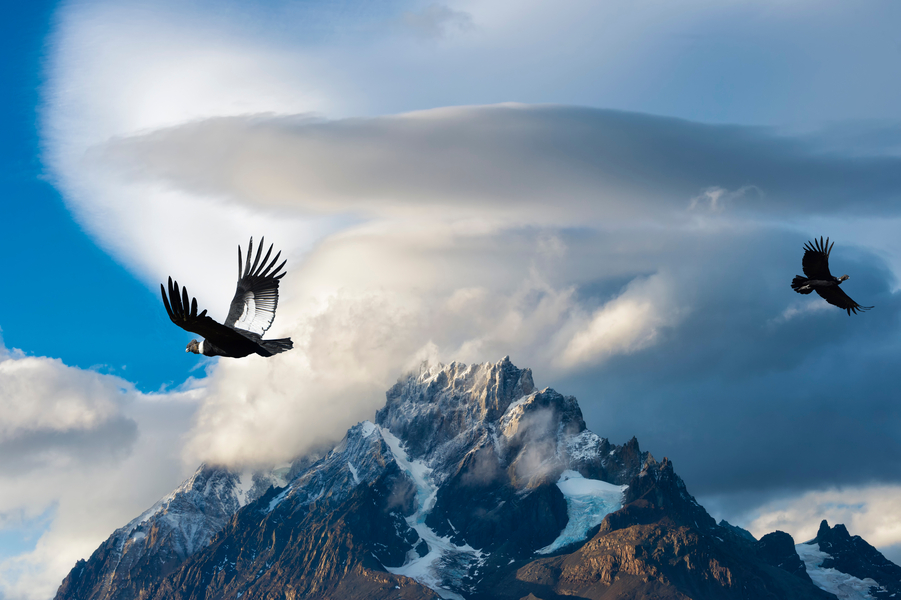
The Condor of the Andes is an emblematic bird in Colombia.
As it is impossible to travel without trying the local cuisine, you will find here the best gastronomy in the Eastern Andean Region. As is usual in Colombia, each part has it’s own particular dishes and desserts and here you will find the best of them!
Starting in Tolima, you cannot go without trying the Lechona, it is suckling pig or pork marinated with fried peas, lard, and is usually served with white arepas. You have to try also the Tamal Tolimense, in the preparation, the ingredients are rice, beef, dried peas, pork, egg, potatoes, chicken, garlic, onion, coriander, etc.
In Cundinamarca you will find the Ajiaco, a type of chicken soup prepared with sabanera potatoes, criolla, guascas, pastusa potatoes and cob, usually accompanied with rice, avocado, cream of milk and capers.
One of the most traditional dishes is also the Santafereño stew, prepared with meat, yucca, banana, pastusa and sabanera potatoes and tender corn on the cob and is served decorated with cabbage leaves. When it comes to desserts, you can't miss the Cuajada con Melao, which is curd cream covered with panela caramel, as well as the cream dessert and rice pudding.

The ajiaco santafereño y similar to a chicken soup accompanied with Colombian different types of potatoes, alcaparras, guascas and cream milk.
Boyacá is known for being authentic and conserving its roots. For example, the chicha and guarapo are beverages that come from pre-Columbian times based on corn. Other typical drinks of the region are sabajón, panela water (aguapanela), rice masato, kumis and quinoa beer.
As typical dishes you can find the boyacense stew, the Sutamarchán longaniza, which is a type of sausage, the lamb stew, the peasant stew or boyacense stew, rulla soups, among many other dishes. And for dessert, you have to try the filled quesadillos, the curd cake with melao, the ripe plantains stuffed with cheese, the feijoa sweets from Tibasosa and the curuba sponge, among others.
Finally, in both Santanderes you will find that the regional dishes are simple to prepare and satisfy even the most demanding of palates. Some of them are the mute, the goat, the triphasic sancocho, the sobrebarriga, the turmada, the oat and pigeon soups, the 'oreada' or dried meat, the corn arepas and the culona ants, the latter with a belief of being nutritional and aphrodisiac.
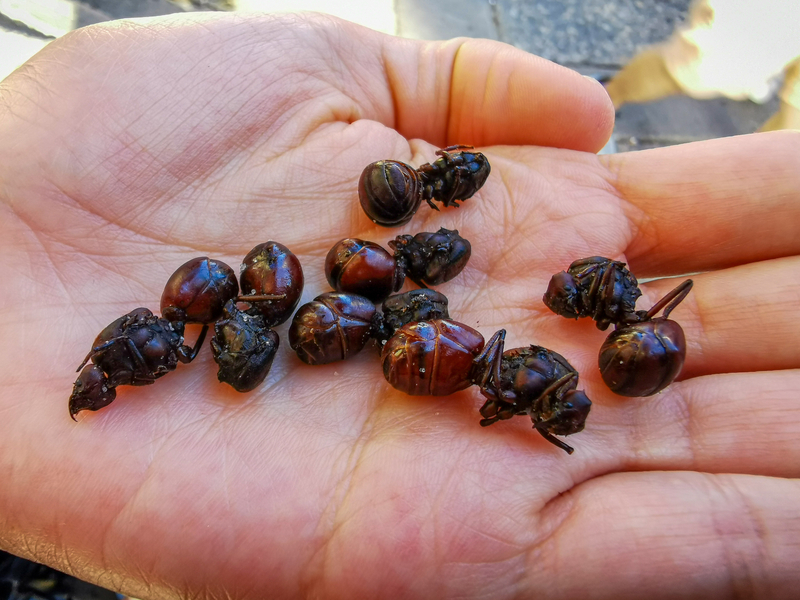
The culona ants are a typical snack in Santander, Colombia.
Now you’re ready to live the best experiences in the Eastern Andean Region with its diversity in landscapes, food and experiences. Come and discover for yourself all that this region has to offer, and remember, the risk is that you’ll want to stay!